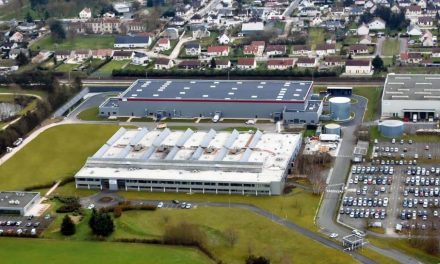What’s the SCOOP – 2023 Trends – part four
It’s been a good year for the EMS industry in general, and with better component availability it would have been even better. But how is everyone in the industry feeling about 2023? I reached out to around 50 CEOs and many responses are in. Take a look at what those running EMS companies and those companies that supply them as well as a smattering of what consultants, experts and economists think.
We’ll be serializing the thoughts and musing of the industry’s great and good over the coming weeks and wrapping that series up with an e-book in January. I’ve started interviewing some of those that contributed and you can watch those interviews in the EMS@C-Level youtube playlist, or listen to the EMS@C-Level podcast on buzzsprout or wherever you get your podcast. If you have an opinion and want to share it, write to me in less than 400 words and we can add it to the mix. If you don’t have my email address hit me up on LinkedIn.
Part four brings more thoughts from the great and the good of the EMS industry on trends to watch in 2023. This time we hear from leadership from KATEK, Creative Electron, MARC, CLIP Automation and NextGen CADCAM.
 Rainer Koppitz, CEO, Katek Group
Rainer Koppitz, CEO, Katek Group
In 2023 I am expecting some changes in the dynamics that drive pricing, particularly the cost pressures that come from rising prices in energy and salaries as we continue to manage talent shortages and the price of some components.
While most component shortages will most likely ease, some will continue. In terms of pricing those in short supply will remain high, while others, like PCBs and memory are likely to shift towards a buyer’s market as availability turns to over supply. Shortages have led to swollen inventory and work-in-progress (WIP) levels and that’s something the industry will need to work on in 2023. Inventory and WIP has to be converted to cash and backlogs need to be reduced to ensure businesses are ready for new products and projects.
We’ve been dealing with component and talent shortages for a few years. The next shortage will be production capacity, largely driven by those talent shortages. OEMs need to make sure their partners have and will allocate them capacity to ensure they can get their products manufactured. For us that’s about even closer collaborative relationships with customers that deliver reliable and predictable commitments while remaining agile enough to manage changing demand profiles.
For the big European EMS players opportunities abound! The regionalisation of manufacturing and trends in friend-shoring driven by geopolitical unrest are resulting in a European manufacturing renaissance. OEMs, or brands, have seen how well the industry has performed during recent disruptions, particularly component challenges. As a result I expect to see real growth in the overall outsourced electronics market, and I think most of that growth will have an impact on the top ten to twenty European EMS players.
On the back of 2022 and given my expectation for 2023, I expect to see more industry consolidation driven by European EMS companies, some within Europe, but plenty of European companies adding capacity in North America and Asia. I am also expecting considerable investments to be made in robotics, automation and general digital transformation to mitigate the talent shortages and help digest increasing demand.
As a caveat to everything mentioned above, the economic outlook is unpredictable and the potential for recession remains, although I suspect it will probably be much softer than was expected some months ago. It is also likely to have a greater impact in sectors like real-estate and retail. If it does hit the electronics markets it will be balanced by the higher than ever backlogs that exist in most industries, especially those not affected by consumer sentiment.
 Ashutosh Kharangate, CEO, MARC Glocal
Ashutosh Kharangate, CEO, MARC Glocal
I am hoping, and suspecting, that 2023 will be a breakout year for manufacturing in India. Apple’s recent announcement, along with numerous other indicators suggest that the time has come for the only country that can compete with China for labor volume will finally compete on the world stage.
In the coming months, we will complete our detailed report on EMS in India in partnership with SCOOP. The preliminary findings show an industry that is poised for real growth, a country that is bucking inflation trends and has no shortages of talent, a pro-business government, and an infrastructure that is continuously improving. Interestingly the stock market in India is also bucking trends and maintaining solid performance while others falter. What’s more the consumer market in India is expected to grow thanks to a demographic profile advantage and a growing population that has more aspirations and more disposable income.
You can be sure that investment from brands like Apple will result in investment throughout the supply chain as a huge manufacturing ecosystem moves to India to support them.
Our work in research allows us, and our customers, access to many industry trends and while we see some economic headwinds, we also see tailwinds thanks to growth in several industry sectors, like EVs, cloud computing, the roll out of 5G, medical electronics and mil/aero.
While many sectors, particularly consumer based ones, may see demand drop quite quickly in the new year as people spend less on product and more on services, we think the electronics manufacturing industry is diverse enough to weather the storm and if they do see a downturn, we expect it to be a soft landing and not long lasting. After all, electronics have become such an integral part of our lives that it’s hard to imagine people not wanting the next big thing or the next big upgrade.
 Dr. Bill Cardoso, Founder and CEO, Creative Electron
Dr. Bill Cardoso, Founder and CEO, Creative Electron
This is probably one of the hardest years to predict, even after the many years of disruption we’ve seen in the 2020s. I am both curious and cautious as we enter a new year. We’ll have to deal with a potential economic downturn, less access and a higher cost of capital and cash, unpredictable supply chain availability, the ongoing impact of the pandemic, the potential for inventory overhang, and challenges in staffing thanks to a real mismatch between available talent and open positions.
In many ways we’re aquaplaning into the new year on the back of an exceptional 2022, and while I see some reshoring and mitigation of any downturn as technology becomes even more ubiquitous, I would caution against collective optimism and any kind of reliance on big government to have an impact. Globalization is a slow ship to turn.
While most people are feeling good about the buffer provided by their order backlog and the improving availability of components to allow them to fulfill that backlog, I am concerned about the validity of both the order-books and the inventory. Many orders have been placed to ensure a place in the manufacturing queue. As demand profiles change, some of those orders could evaporate. Meanwhile, do we really know how much risk exists in our inventory? 2023 could be the year it all unravels.
It’s going to be an interesting year and those that thrive in this environment will be the companies with a strong cash position and the agility to move quickly when needed.
 Rajeev Bhalla, Co-founder and CEO, CLIP Automation
Rajeev Bhalla, Co-founder and CEO, CLIP Automation
I am expecting 2023 to be a breakout year for automation, digital transformation and solutions like those that we have developed at CLIP Automation. There are so many reasons for us to really embrace digital transformation in 2023, not least the challenging talent market in the manufacturing industry, particularly, but not only, in places like the USA and Western Europe.
Talent shortages pose a real risk to the potential for manufacturing in these regions to benefit from the prevailing trends around re-shoring or friend-shoring as the world reassesses globalization in light of geopolitical threats and a desire to shorten supply chains.
For countries like the US to benefit from these trends, they will need to scale quickly, and to do so more competitively and efficiently than in the past. Meanwhile the labor market is unusually tight even with economic headwinds on the near horizon. This seems like the perfect time to double down on digital transformation and to embrace more flexible and adaptable automation solutions that make manufacturing more competitive and less dependent on operators.
The tricky part will be executing these large-scale digital transformation initiatives in iterative phases and using the right technologies to lower risk and upfront costs while maximizing the value of current infrastructure. This is where companies like CLIP Automation can be truly transformative for manufacturers and supply chain operators; by making digital transformation faster to recognize ROI, safer to execute, and tangibly achievable.
We are more ready than ever to support the goals of the fourth industrial revolution. For the first time in a decade the available technologies, like AI, robotics and big data, are ready to support the demand and desire to move to a more autonomous, digitally enabled manufacturing.
 Jürgen Lauter, Group Director Strategic Projects, KATEK Group
Jürgen Lauter, Group Director Strategic Projects, KATEK Group
2022 was an extremely challenging year for our industry, having to cope with a very demanding situation in the supply chain. This led to increasing levels of inventory and prices and thus a very high demand on cash. On the other hand this situation showed our customers and the industry that well managed EMS companies are very important for the whole industry, that we can handle extreme situations and make deliveries happen.
Many of our existing, and also potential, customers saw during the past two years that a supply chain following a local for local approach is more reliable and sustainable and that size in regards to purchase volume does matter. Not only because of those reasons, we expect to see further consolidation in the industry to leverage these advantages. We see a clear trend to further outsourcing of the full value chain of electronic products from OEM to EMS specialists and we see that customers are beginning to rethink their supply chain and continue to re-shore production to follow that local for local approach.
KATEK can support all of these trends in 2023 beginning with the closing of our recent acquisition of Nextek in the US in early January. We are now able to serve our European customers in the North American market with two entities on the continent. This also gives us a very good base for local opportunities in the US and Canada markets. In addition we have our new beflex entity in Malaysia. We will strengthen our production network by focusing on industry sector specific strings without losing the advantages and agility of our speedboat approach. More automation and digitalisation projects will support our competitiveness on the cost and labor side.
Despite the various economical and political challenges, we are optimistic that our goal to further expand our market leadership in 2023 will be successful.
 Ravi Kumar, Director of Operations, NextGen CADCAM
Ravi Kumar, Director of Operations, NextGen CADCAM
I see two key trends from where we sit here in India. The first is greater use of outsourced services to mitigate labor shortages. And the second is the rise of India as a significant geography for manufacturing companies and the associated ecosystem and supply chain. Let me explain:
- One of the main challenges manufacturing companies face is talent. Recruiting talent, training talent and retaining talent. This is coupled with, and partially the cause of, wage inflation in most geographies, but particularly in North America and Europe. Many EMS companies see talent as a risk that could slow their growth and damage their prospects as their customers look to re-shore manufacturing. What some of these outsourced manufacturing companies are now realizing is that they can actually outsource some of the skills they need to regions that have an abundance of competitively priced talent, like India. We are seeing increasing demand for engineering support, in every department from purchasing to CADCAM, delivered in a flexible user-friendly way.
- As for India, with companies like Apple looking to reduce their dependence on China, India is amongst the obvious candidates for the next big manufacturing geography. Many see Vietnam and Mexico as big winners and I expect they will also do very well in 2023, but India is unique in having a population of more than one billion, a huge number of young ambitious graduates excited about the prospect of working in technology, and a huge and growing consumer market. EMS in India is growing faster than ever and when big OEMs start to see the value I expect that growth to accelerate.
Check out parts one to three as well as interviews with contributors:
- What’s the SCOOP – 2023 Trends – part one with ALL Circuits, Koh Young, Season Group, Aqueous Technology, Flexi Versa and Omnics
- What’s the SCOOP – 2023 Trends – part two with BMK, ASMPT, Microart, Cybord and Plexus
- What’s the SCOOP – 2023 Trends, part three with KATEK, TTi, Cogiscan, and consultants Pamela Gordon and Randall Sherman
- Electronic Manufacturing Trends in 2023 – How We See It from Koh Young’s Joel Scutchfield
- What’s the SCOOP – 2023 Trends – One Writer’s View (That’s me!)


 Rainer Koppitz, CEO, Katek Group
Rainer Koppitz, CEO, Katek Group Ashutosh Kharangate, CEO, MARC Glocal
Ashutosh Kharangate, CEO, MARC Glocal Dr. Bill Cardoso, Founder and CEO, Creative Electron
Dr. Bill Cardoso, Founder and CEO, Creative Electron Rajeev Bhalla, Co-founder and CEO, CLIP Automation
Rajeev Bhalla, Co-founder and CEO, CLIP Automation Jürgen Lauter, Group Director Strategic Projects, KATEK Group
Jürgen Lauter, Group Director Strategic Projects, KATEK Group Ravi Kumar, Director of Operations, NextGen CADCAM
Ravi Kumar, Director of Operations, NextGen CADCAM










